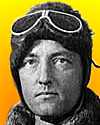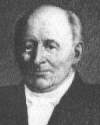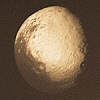 | TODAY IN SCIENCE HISTORY
NEWSLETTER - 25 OCTOBER |
 On 25 Oct 1647, an Italian physicist died whose barometer experiment revealed that the weight of air can support a column of mercury in a tube. We live under an ocean of air. Who knew air could be so interesting? After air's presumed-nothingness was laid aside, the understanding beyond led to the most fascinating, profound revelations about life on earth. Today's Science Store pick is: An Ocean of Air: Why the Wind Blows and Other Mysteries of the Atmosphere, by Gabrielle Walker, whose freshness of vision is science writing at its best: clear, witty, relevant, unbelievably interesting, and just plain great. Walker presents a lively history of scientists' and adventurers' exploration of this important and complex contributor to life on Earth, from Galileo's early attempts to show that it has weight to the explorations by 20th-century scientists Oliver Heaviside and Edward Appleton of the radio-wave reflecting ionosphere. Also answered are and why hurricanes form only in the tropics and what is in global warming's future. It is available New from $0.65. Used from $0.01. (As of time of writing.). On 25 Oct 1647, an Italian physicist died whose barometer experiment revealed that the weight of air can support a column of mercury in a tube. We live under an ocean of air. Who knew air could be so interesting? After air's presumed-nothingness was laid aside, the understanding beyond led to the most fascinating, profound revelations about life on earth. Today's Science Store pick is: An Ocean of Air: Why the Wind Blows and Other Mysteries of the Atmosphere, by Gabrielle Walker, whose freshness of vision is science writing at its best: clear, witty, relevant, unbelievably interesting, and just plain great. Walker presents a lively history of scientists' and adventurers' exploration of this important and complex contributor to life on Earth, from Galileo's early attempts to show that it has weight to the explorations by 20th-century scientists Oliver Heaviside and Edward Appleton of the radio-wave reflecting ionosphere. Also answered are and why hurricanes form only in the tropics and what is in global warming's future. It is available New from $0.65. Used from $0.01. (As of time of writing.). | | For picks from earlier newsletters, see the Today in Science History Science Store home page. | |
 | In Winter, [the Antarctic] is perhaps the dreariest of places. Our base, Little America, lay in a bowl of ice, near the edge of the Ross Ice Barrier. The temperature fell as low as 72 degrees below zero. One could actually hear one's breath freeze. - Richard Byrd, American explorer, aviator and scientist (born 25 Oct 1888).  |
 | When something comes along and is really important to your career and important to science, important enough so that lots of other people are working on it, you have got to do it in a short time. You have got to get in there and run experiments quickly and get published. That is the killer instinct. I do not think women have that part of it. Part of it comes from sports. It's like scoring a goal. - Marian Koshland, American immunologist (born 25 Oct 1921).  |
| Before you look at today's web page, see if you can answer some of these questions about the events that happened on this day. Some of the names are very familiar. Others will likely stump you. Tickle your curiosity with these questions, then check your answers on today's web page. |
 | Samuel Heinrich Schwabe, born 25 Oct 1789, was an amateur German astronomer who discovered the length of a sunspot activity cycle. Schwabe had been looking for possible intramercurial planets. From 11 Oct 1825, for 42 years, he observed the Sun virtually every day that the weather allowed. In doing so he accumulated volumes of sunspot drawings.
 How many years did Schwabe discover between the peaks (or the periodicity) of the number of sunspots visible on the solar disk that he discovered? |
 | An Italian physicist and mathematician (1608-1647) invented the barometer. His barometer experiment (1644) using a tube filled with “quicksilver” then inverted into a dish of mercury, made his name famous.
 Can you name this scientist? |
 | On 25 Oct of a certain year, the first domestic microwave oven was sold by Tappan. (Some years previously Raytheon demonstrated the “Radarange,” the world's first commercial microwave oven, which cost between $2,000 and $3,000. They lacked the distribution and marketing infrastructure to promote and sell a domestic appliance.)
 In what decade did Tappan introduce the domestic model microwave oven? |
 | On 25 Oct 1671, Giovanni Cassini discovered one of Saturn's moons. Seen now as Saturn's third largest moon, it is one of the stranger of the many moons of Saturn. Its leading side is dark with a slight reddish color while its trailing side is bright. This difference is so striking that Cassini noted that he could see Iapetus only on one side of Saturn and not on the other.
 Can you name this moon? |
When you have your answers ready to all the questions above, you'll find all the information to check them, and more, on the October 25 web page of Today in Science History. Or, try this link first for just the brief answers.
Fast answers for the previous newsletter for October 24: PET - poly(ethylene terephthalate) • Antonie van Leeuwenhoek • Danish • silk stockings • Alexander Pope. |
 If you enjoy this newsletter, the website, or wish to offer encouragement or ideas, please send feedback by using your mail reader Reply button. If you enjoy this newsletter, the website, or wish to offer encouragement or ideas, please send feedback by using your mail reader Reply button.
Your click on a StumbleUpon, Google+ or Facebook social button on the site webpages is also a welcome sign of appreciation. Thank you for using them. |
To find citations for quotations go to the corresponding webpage by clicking on the “quotes” balloon icon. Sources for the thumbnails appear on today's webpage with the corresponding item.
� This newsletter is copyright 2013 by todayinsci.com. Please respect the Webmaster's wishes and do not put copies online of the Newsletter � or any Today in Science History webpage. (If you already have done so, please remove them. Thank you.) Offline use in education is encouraged such as a printout on a bulletin board, or projected for classroom viewing. Online, descriptive links to our pages are welcomed, as these will provide a reader with the most recent revisions, additions and/or corrections of a webpage. For any other copyright questions, please contact the Webmaster by using your mail reader Reply button. |
--
If you do not want to receive any more newsletters,
Unsubscribe To update your preferences and to unsubscribe visit
this link 





 How many years did Schwabe discover between the peaks (or the periodicity) of the number of sunspots visible on the solar disk that he discovered?
How many years did Schwabe discover between the peaks (or the periodicity) of the number of sunspots visible on the solar disk that he discovered? 
 Can you name this scientist?
Can you name this scientist? 
 In what decade did Tappan introduce the domestic model microwave oven?
In what decade did Tappan introduce the domestic model microwave oven? 
 Can you name this moon?
Can you name this moon?  If you enjoy this newsletter, the website, or wish to offer encouragement or ideas, please send feedback by using your mail reader Reply button.
If you enjoy this newsletter, the website, or wish to offer encouragement or ideas, please send feedback by using your mail reader Reply button. 

Δεν υπάρχουν σχόλια:
Δημοσίευση σχολίου